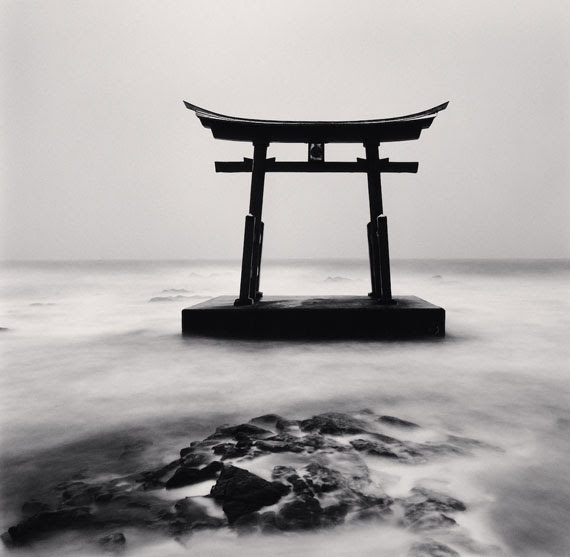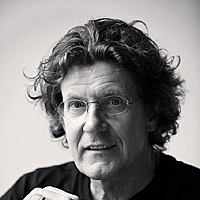
© Michael Kenna, Torii Gate, Study 2, Shosanbetsu, Hokkaido, Japan, 2014
Expositions du 22/10/2015 au 23/12/2015 Terminé
Bernheimer Fine Art Haldenstr. 11 6006 Lucerne Suisse
Michael Kenna is one of the most renowned landscape photographers of our time. His black-and-white photographs are characterized by their simplicity and sense of purity. Kenna frequently travels to Japan, after falling in love on his first visit there 30 years ago, and he is drawn back by his fascination with the Japanese landscape and philosophy. His works show clearly outlined elements in reduced formal language and poetic presentation. The viewer repetitively encounters meditative, lonely trees, mountain silhouettes, bridges, water steles and small islands. His sensitive photographs seem to attempt to unveil the aesthetic sense of the Japanese soul.Bernheimer Fine Art Haldenstr. 11 6006 Lucerne Suisse
Micheal Kenna has been deeply influenced by the Haiku style of poetry, considered to be the shortest poetic form in the world. The original Japanese Haiku consists of three word groups arranged in vertical order. Nature is an essential part of haiku poetry, as poets often use nature as a representation of the moment or experience they wish to capture. Nature is regarded as the mirror of the soul, although there are some symbolic images which can be attributed to a certain meaning. The main point of this short kind of poetry is its inexhaustible interpretation by the reader.
Thus certain elements can create a certain meaning, for instance how Yvonne Meyer-Lohr describes it in Kenna’s book Forms of Japan. The sea, or rather the water, stands as symbol for isolation which keeps the small islands and steles away from the shores. For Japan, this is detrimental because the sea has separated Japan from the rest of the world, resulting in the isolated culture of Japan. The earth, in the form of mountains and the mainland symbolises power. It seems to be static and gives shape to the surrounding environment. However, this impression is deceptive, because the earth changes over time, in both a violent, destructive and preserving manner at once.
.jpg)
© Michael Kenna, Torii Gate, Study 2, Shosanbetsu, Hokkaido, Japan, 2014
The tree is a symbol of constant transformation. They change with the different seasons, nor is it the same tree as it was the previous year. The sky stands for dissolution and for transitory moments. As humans are aware of their transitory position and own mortality, they reflect the painful beauty of the precariousness of life. Furthermore, there is the fifth element present in his work, which cannot be seen, but can be felt in the atmosphere; the spirit. It is present in the sense of emptiness, yet it fills this void, simultaneously standing for a sense of absence and presence at once. It is unity and entity, representing the fundamental idea of Zen philosophy; "the one in all and the all in one".
However, Kenna only gives certain hints which serve to provoke the viewer’s imagination and resists – just as in Haiku poetry – to be fully deciphered. In the manner of the Zen Buddhism, he allows glimpses of the truth but leaves the actual meaning open for interpretation by each viewer. Kenna creates an empty space that is able to absorb feelings and thoughts to let the imagination play. Thus, he transforms the emptiness into fullness and makes visible what actually is invisible; the grace of the small, simple things and revealing what lies between them through their minimalist appearance.


